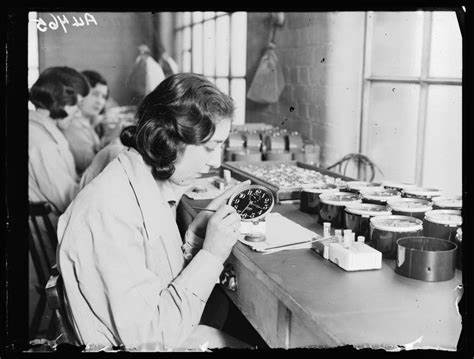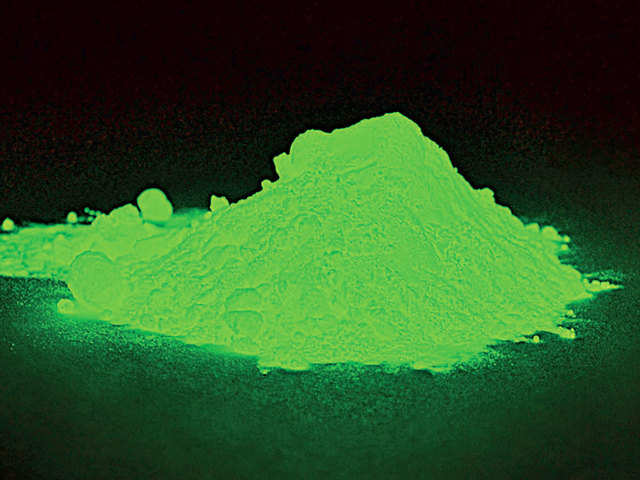
The early 20th century saw rapid industrialization, the rise of corporate bodies, scientific breakthroughs, and optimism about technology improving society. One such discovery was radium, a glowing, radioactive element that was hailed as a miracle substance. It was believed to have therapeutic properties, and its glow was considered a sign of its potent energy, but little was it known that it was very toxic and harmful. Marie and Pierre Curie’s 1898 discovery of radium revolutionized science, transforming medical therapies and consumer goods of that era. Their breakthrough had profound impacts on various fields, highlighting the significance of radium in both healing and daily life.
Young women working with radium-based luminous paint suffered fatal health issues due to power tussle and greed, underscoring the critical need for workplace safety standards. This substance, once thought harmless, proved to be a fatal adversary. The Radium Girls were exposed to dangerous radiation at work. Their tragic suffering highlighted corporate greed and worker exploitation.
Read Also:
Supporting a Partner Through Addiction: A Compassionate Approach
The Rise of Radium and the Birth of the Radium Girls

Radium was initially seen as an amazing discovery. Being radioactive and glowing in the dark made it ideal for products needing visibility in low-light conditions. During World War I, the demand for luminous dials increased dramatically. Radium was used in watches, clocks, and military instruments to make dials glow brightly in dark conditions, especially in battlefields. Radium’s new use created a booming industry, leading U.S. factories to hire workers for painting dials.
Read Also:
The Apology Paradox: Supporting Your Partner and Facing the Fallout
In 1917, at the height of World War I, the U.S. Radium Corporation, based in Orange, New Jersey, began employing young women to paint watch dials with radium-based paint. The job was seen as attractive because it offered steady pay and relatively easy work. Young, working-class women, often freshly hired from high schools, painted dials by hand with radium paint using fine brushes.
To maintain the precise point on their brushes, the workers were encouraged to lick them. This practice, although thought to be harmless at the time, would have devastating consequences.
At first, the women were told that the radium was safe. In fact, the company’s supervisors and doctors assured them that it would have no ill effects. The glowing paint was touted as modern science’s marvel, and some women saw their work as glamorous. The glowing dials and the radium paint were often described as “harmless,” and the women took pride in their work. Some even wore the glowing paint on their faces or used it as an embellishment on their clothing. It was, after all, a time of discovery and excitement.
However, this excitement was short-lived. Workers and companies were unaware or ignored that radium, a highly radioactive substance, was incredibly toxic. When the women licked their brushes, they were unknowingly ingesting small amounts of radium. Radium particles would enter their bodies through their mouths, noses, and even through cuts on their skin. The radiation would slowly accumulate in their bones, causing severe damage over time.
The First Signs of Illness
It wasn’t long before some of the workers began to experience strange symptoms. At first, the signs were subtle: fatigue, pain in the bones, and a general feeling of being unwell. But as time passed, the symptoms grew more severe and unmistakable. The women experienced persistent bone pain leading to fractures, and their gums began to swell and recede. Many of them began to lose their teeth, and their faces became disfigured as tumors grew in their jaws. They developed severe anemia, and their skin turned a sickly pale or yellowish hue.
Some women began to experience spontaneous fractures, even in their bones, with no apparent cause. Others complained of debilitating headaches, dizziness, and vision problems. Their hair would fall out, and many developed abscesses and sores in their mouths. The women were gradually succumbing to the toxic effects of radium, a substance that was once thought to be magical.
Read Also:
Top 18 Richest Businessmen in Africa 2024
Initially, the symptoms left their doctors perplexed. They could not figure out what was causing the mysterious illnesses. Doctors sometimes misdiagnosed the women, attributing their health issues to poor hygiene or unhealthy lifestyles instead of radiation exposure. Medical professionals often dismiss women’s symptoms as psychological, advising them to “rest” or “improve their diet,” overlooking their genuine health concerns.
As the number of women falling ill and dying increased, it became evident that there was a more sinister cause at play. The women were not suffering from some obscure disease—they were suffering from radium poisoning.
Corporate Denial and the Fight for Justice
In the face of mounting evidence, the U.S. Radium Corporation continued to deny any responsibility for the women’s illness. The company’s management falsely promoted radium’s safety, ignoring workers’ dangerous radiation exposure and severe health risks. They actively suppressed scientific research that could have proven the connection between radium exposure and the women’s illnesses. Executives and doctors claimed radium was safe, despite ongoing suffering and deaths, misleading the public about its true dangers.
The company’s actions reflected the era’s corporate culture, prioritizing profits over workers’ welfare, despite severe health risks. The company prioritized profits over workers’ safety, ignoring radium’s severe health risks to avoid financial losses.
Despite the company’s efforts to avoid responsibility, a small group of women, led by Grace Fryer, began to fight back. Grace Fryer, a young woman who had worked at the U.S. The Radium Corporation had suspicions that worker illnesses were related to radium exposure, yet they did not accept responsibility, placing profit above safety. The company’s delay in recognizing the dangers caused significant suffering among the affected women. She gathered other affected women, and together they investigated the connection between their symptoms and radium exposure.
In 1927, Fryer and several other Radium Girls took legal action against the U.S. Radium Corporation. The legal battle would go on for years, and the women would face tremendous challenges. The company’s aggressive legal tactics complicated their case, discrediting the women’s claims and casting doubt on their illnesses’ validity. The company’s lawyers claimed the women’s symptoms were due to poor diet or hygiene, not radium exposure, to avoid liability.
Despite obstacles, the women won in 1928, with the company agreeing to settle the lawsuit, marking a major victory. The settlement gave the women some compensation, but it was insufficient to account for the immense suffering they had endured. The company, however, never admitted any wrongdoing.
The Legal and Societal Impact of the Radium Girls
The legal case brought by the Radium Girls had a lasting impact on labor rights and workplace safety. This landmark case exposed workplace toxic substance dangers and led to future safety regulations, significantly impacting industrial standards. This case highlighted the exploitation of women workers, exposing their dangerous working conditions and lack of protection or recourse.
The Radium Girls’ fight revealed corporate willingness to protect profits at the expense of workers’ health and lives. The U.S. Radium Corporation’s actions highlighted the need for stricter workplace oversight and regulations, especially regarding potentially hazardous materials.
The case also shed light on the power dynamics between corporations and workers. Working-class Radium Girls courageously pursued justice despite facing neglect from the medical and legal systems. Their plight remained unacknowledged until they took decisive action themselves. Even with their struggle brought to light, the compensation they received was minimal in comparison to their suffering.
As a result of their case, workplace safety laws began to evolve. The U.S. government created agencies like OSHA to set workplace safety standards, protecting workers from toxins like radium. For numerous Radium Girls, safety reforms arrived too late; they had already endured the dire consequences of corporate negligence.
Read Also:
Top Fraudulent Acts of All Time: A Closer Look at Infamous Scandals
The Legacy of the Radium Girls
The story of the Radium Girls is a tragic one, but it is also a story of resilience and courage. Despite immense suffering, the Radium Girls’ relentless fight for justice significantly impacted labor rights and workplace safety in the U.S.
The Radium Girls’ story highlights corporate malfeasance dangers and underscores the crucial need for robust workplace safeguards. These women, who suffered greatly due to the negligence of their employers, have left an indelible mark on history. Their plight underscores the necessity of vigilant oversight and robust worker rights to prevent such tragedies from recurring. Their suffering helped to create the foundation for many of the labor laws and regulations that protect workers today. They pioneered workplace safety and rights, inspiring generations of workers, activists, and advocates for change through their enduring story.
The Radium Girls highlight the necessity for ongoing vigilance to ensure companies prioritize worker safety over profit. Their story is a lasting reminder of the importance of protecting workers’ rights and health. The wisdom gained from their struggles is timeless and should always be remembered. These experiences, steeped in struggle, offer wisdom that transcends generations and remains relevant throughout the ages. They inspire us, reminding us of our strength and resilience, and guide us through challenges with their beacon-like presence.
FAQ
1. What happened to the Radium Girls?
The Radium Girls were young women who worked in factories painting watch dials with radium-based paint during World War I. The radium poisoning they suffered from led to severe health issues, including bone fractures, anemia, and facial disfigurement. Many of them died young, and their case became one of the most famous labor lawsuits in U.S. history.
2. How did the U.S. Radium Corporation react to the workers’ illnesses?
The U.S. Radium Corporation denied any link between radium exposure and the workers’ illnesses. They attempted to discredit the women’s claims and even suppressed evidence. The truth emerged only after the women took legal action, but unfortunately, it was too late for many of them. Their perseverance, however, paved the way for greater awareness and future protections.
3. Why didn’t the women know about the dangers of radium?
Radium was once believed to be health-beneficial, resulting in its use in consumer products like toothpaste and drinking water. The common misunderstanding of radium’s safety resulted in considerable health risks prior to the recognition of its dangers. Radiation’s dangers were mostly unknown, and employers assured the women working with radium of its safety. The false security caused worker health crises, highlighting the critical need for accurate information and transparency in workplace environments. The narrative highlights the critical importance of keeping employees well-informed about potential risks.
4. What impact did the Radium Girls’ case have on workplace safety?
The case led to significant changes in workplace safety laws and regulations. This landmark case exposed workplace toxin dangers, leading to the establishment of stronger labor protections and occupational safety standards.
5. Is the story of the Radium Girls still relevant today?
The Radium Girls’ story underscores the crucial need for vigilance in workplace safety and combating corporate negligence. Their brave fight established stronger labor protections and inspires ongoing efforts to prioritize worker safety and rights. Their legacy is a testament to the importance of transparency and the ongoing pursuit of justice in the workplace. Strict regulations are necessary to protect workers from hazardous materials when safety precautions are insufficient. Prioritizing worker safety is essential.



Wow! This is an incredible piece. Thank you do much.
❤️